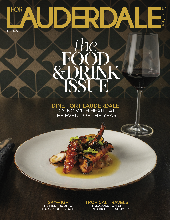
In connection to that history, I’m sometimes asked, “But who were the Black Seminoles?”
The answer is not a simple one, as it dates back to a time when Florida was under the control of Spain. That nation’s reach during the 16th century also included portions of Georgia, Alabama, Mississippi, North Carolina, South Carolina and Louisiana. Gradually those were reduced by English and French settlements.
In 1693, Spain abolished slavery, and Florida offered safe haven for runaway slaves from Georgia and elsewhere. Some historical sources say the slaves were asked to vow fealty to Catholicism, and also be ready to aid militias in fighting Spain’s colonial enemies.
But many runaway slaves soon found common cause and community with the Seminoles, who were a mix of Native American tribes, including the Creek, the Choctaw and the Miccosukee, among others. Together they fought to prevent Europeans from encroaching on their territory, primarily denser forested areas. The runaway slave contingents became known as the Black Seminoles.
In time, people of African origin who weren’t slaves in northern (and later, U.S.) territories also came under the Seminole umbrella. They were called the Black Freedmen. Various sources say they came from abandoned Spanish colonies in the Bahamas, former African slaves from Bermuda, even freed slaves from Native American tribes.
Historians suggest there was a type of slavery among the Seminoles. However, unlike in the U.S. South, there was a broad range of freedoms for the Black Seminoles. Sometimes, they paid a rental tax for their small farms or an annual tribute for the harvest. But forced labor was not something they endured.
The runaway slaves could live with that, knowing they’d be in a far less racist environment. Intermarriage was allowed, as was living in communal settlements and maintaining mutual defense forces. The Black Seminoles were fierce warriors and fought alongside the Native Americans in all three Seminole Wars.
Meanwhile, Spain’s interests in Florida were primarily in the coastal ports and cattle ranches. In general, the Seminoles and Black Seminoles were afforded their spaces in the interior.
So what was that life like? According to Kathleen Kuiper, writing for Britannica, while the Black Seminoles intermarried with the Native Americans, they lived separately in their own villages. But the two worked for the land communally and shared the harvest.
“Both groups wore similar dress, ate similar foods, and lived in similar houses,” Kuiper writes. “The Black Seminoles, however, practiced a religion that was a blend of African and Christian rituals, to which traditional Seminole Indian dances were added, and their language was an English Creole similar to Gullah and sometimes called Afro-Seminole Creole. Some of their leaders who were fluent speakers of Creek were readily admitted to Seminole society, but most remained separate.”
Kuiper notes that the Black Seminoles were relatively prosperous: “They farmed, hunted wild game, and amassed significant wealth.”
Closer to our modern era, after Spain first ceded Florida to England, then reclaimed it 20 years later, then finally sold the territory to the U.S. in 1819, Seminole troubles heightened.
Beginning in the 1800s, American slave hunters made incursions into Florida to seek out Black Seminole villages. The U.S. government also had a beef with the Seminoles for aiding the British in the War of 1812, and began its own forays into northern Florida, which led to the First Seminole War.
Finally, the government launched all-out pushes to move Native Americans in the South to reservations in Oklahoma. Some reluctantly took that option. Other tribes, who formed the Seminoles, headed further south.
The Seminoles and Black Seminoles put up a fierce fight in all three Seminole Wars. Our city was born in the ashes of the Second War, with defiant Seminoles retreating into the Everglades in the face of troops led by Maj. William Lauderdale.
So where did everybody end up? The Spanish settlers in the north fled to Cuba after Britain took over. Some Black Seminoles went to Oklahoma and others fled to Andros Island in the Bahamas. The remaining Seminoles in South Florida settled on a reservation.
And while there is no Black Seminole Tribe registered in South Florida, it’s a certainty that their DNA exists in Broward County today.










